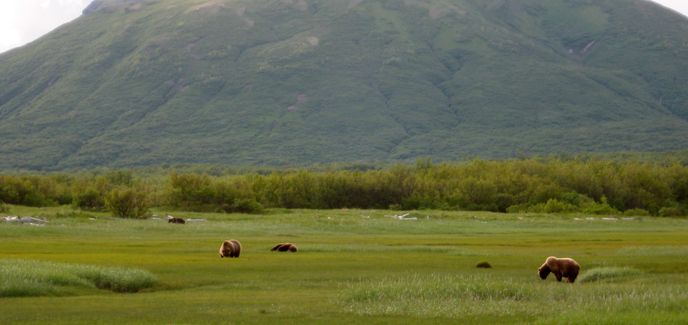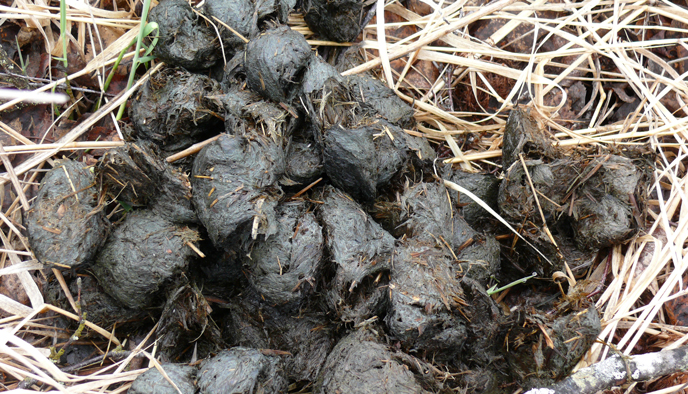Spring is a season often associated with increasing abundance. Grass blades emerge from the soil. Buds on trees and shrubs swell and burst. Birds return from their wintering grounds. Rivers and lakes thaw as people in northern latitudes revel in the increasing daylight.
It is a season of increased growth for many organisms. Plant twigs, stems, and buds surge with life. These plant parts are packed with nutrition for animals—like moose and hares—that are adapted to eat and digest them. Under the water, salmon fry emerge and begin to feed on a bloom of plankton fueled by warming water and increasing sunshine. Moose calves are born and salmon fry emerge in the spring because that is when food, for them, is becoming abundant again. Many of Katmai’s animals begin to grow, and grow rapidly, in the spring.
Somewhat surprisingly, that’s not necessarily the case with Katmai’s brown bears. Very little food is available to bears in the spring, especially in the interior and western portions of the park and preserve. A bear that experienced a lean summer last year emerges from its den to an unkind world with little food. If your name is Ursus arctos, then springtime may be the hardest season to survive.
After emerging from the den, bears are in a metabolic state described as walking hibernation. For two weeks or more, their metabolism will stay suppressed even though they are awake and mobile. After their metabolism begins to increase, they will start to search for food.
In the spring, bears may hunt arctic ground squirrels or the calves of moose and caribou. If it lives on the Pacific coast, then it might follow its nose to a whale carcass that washed ashore last winter. These foods, while certainly nutritious, aren’t abundant or reliable sources of food in Katmai. With few animal-based foods available at this time of the year, bears will likely turn to vegetation.

By mid to late June, newly emergent sedges in salt marshes along the Pacific coast of Katmai are an early season survival food for bears. NPS Photo.
One of the few reliable sources of food for bears in the spring is Lyngbye's sedge (Carex lyngbyaei). On the Pacific coast of Katmai, large numbers of bears gather to graze like cattle when this sedge emerges in salt marshes. As it begins to grow Lyngbye’s sedge is relatively high in protein and lower in crude fiber, so it is easier for bears to digest and extract nutrition from it, but will this plant be enough to help a bear survive the spring?

Springtime bear scat is typically filled with nothing but grass. Bears can graze on considerable amounts of grass and sedge in the spring, but still may be starving with a full stomach. NPS/M. Fitz.
Possibly, but bears can’t survive solely on a diet of grass and sedge and these plants have not even started to grow in March and April when many bears emerge from their dens. Bears aren’t gaining weight on sedge. They are biding their time until more calorie rich foods, like salmon, become available.
Not all bears will survive the spring season. Bears can lose ¼ to ⅓ of their body weight during hibernation, but the weight loss doesn’t end there. In the absence of abundant and nutritious food, most bears continue to lose weight throughout the spring, especially adult females nursing cubs. The first bear you see this spring won’t be well fed. Most likely, it will be a starving bear trying to survive the lean season called spring.
